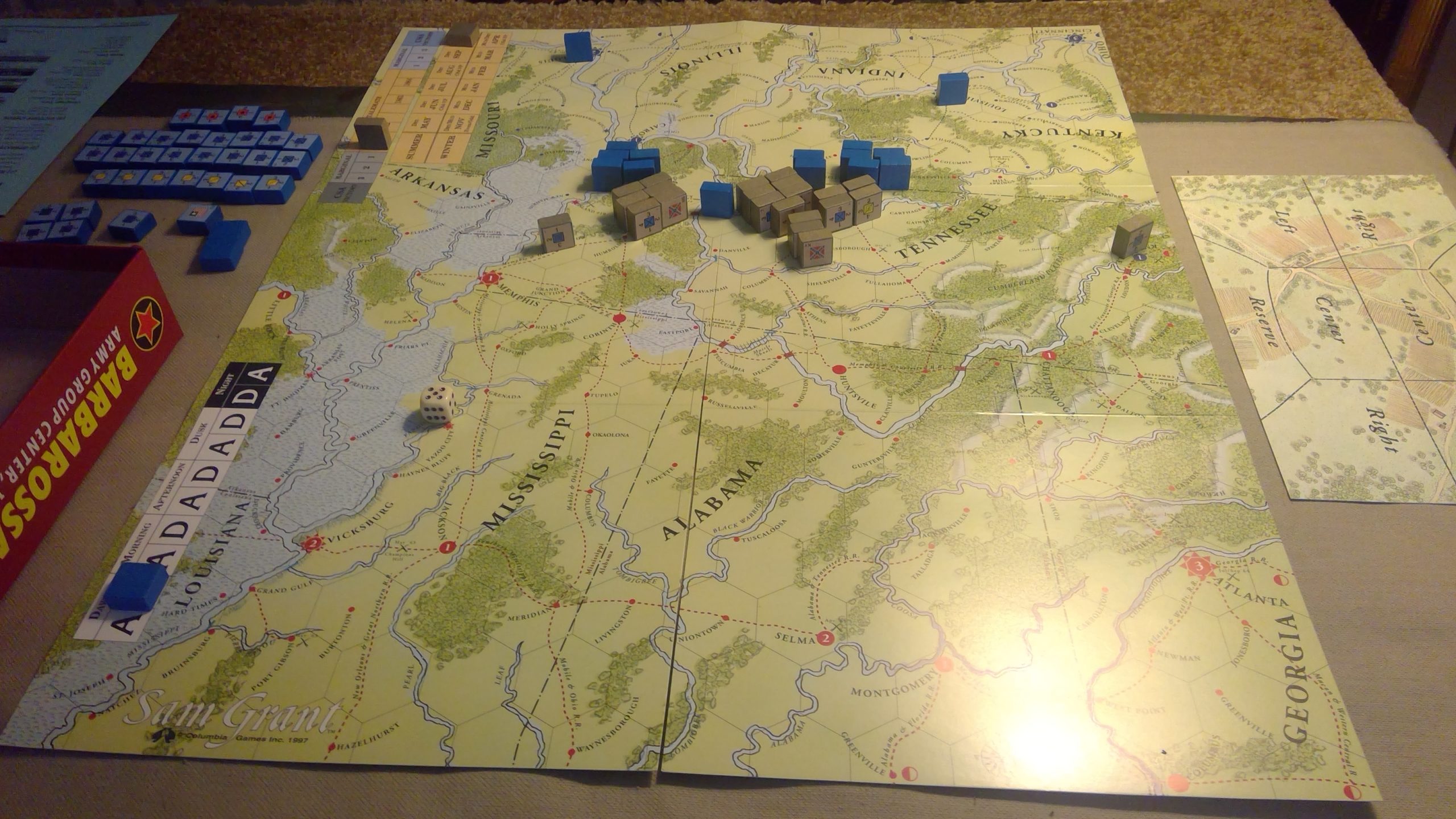Sam Grant
While I was down visiting my parents, I did a lot of gaming with my Dad. As has been usual with us lately, most of that was in Stellaris (we got some testing of the new 3.6 patch in), but we also pryed ourselves away for some conventional board gaming. After kicking around a few ideas, we went with my Dad’s copy of Sam Grant, a Columbia block game on the western theater of the ACW. We stuck with the 1862 scenario, and slowly increased our grasp of the rules as we went (I remember playing Bobby Lee once, but that was a couple decades ago).
Random choice gave me the Confederates, and the scenario starts in February. Not a lot happened in those months, as everything is mud until partway through April, and it is very hard to do anything in the mud. We tried though, with Union troops landing in Kentucky and driving me out of Fort Henry. (Fort Donelson was impossible on the first turn without better opening moves than we had.) I tried to take Paducah, but couldn’t deal with the doubled defense of a forest hex.
I finally took it as the ground dried out in April, but I had to pull back in central Tennessee, abandoning Fort Donelson for a line behind the Duck River. I was thinking this was looking fairly good, but a broad-front offensive crossed the river near the end of May and good rolls, as well as nailing down all the reinforcements won him the battles while I lost about half a dozen divisions and a headquarters. I had to bring in one of the corps in June to help stabilize the situation.
The Federals switched to the other side of the Tennessee River, but I managed to force the battle to two days, forcing expenditure of the last point in a headquarters, and that hampered Union efforts for the rest of the year. He could drive to the Mississippi at the cost of losing central Tennessee, or vice versa, but couldn’t keep both going. I generally played conservative through the middle of the year to keep from having to spend much on headquarters, and get the armies built up.
At first, it looked like my eastern line was going to crumble again, but the Tennessee River is just as difficult a barrier in northern Alabama as elsewhere, and my counteroffensive in Mississippi went well, threatening the strung-out supply line. A series of battles with overall good rolls let me slowly close in with both armies, and retake Nashville in October.

So we ended with a stalemate, though I have a pretty good moral victory, since I managed to not only do better than the historical 1863 start, but got very close to a minor victory.
Once we were playing, I remembered seeing that Bobby Lee is considered the better game, as the scale is better for the system there. And we can both see that. The scale is too high level here for some of the things the game is doing.
That said, it is a good system. Expending headquarters to do operations is a good way to handle overall logistics, and flexibly constrain how much can happen in a turn. The block battle system works as well as ever with the battle boards. The idea that all battles in a round are simultaneous take some getting used to, and we had several occasions that needed a third battle board.
Overall, the system is clean and the rules pretty easy. There’s a couple of minor things (now forgotten) that I never did have a sure answer to, but the rest was very clear.

Discussion ¬